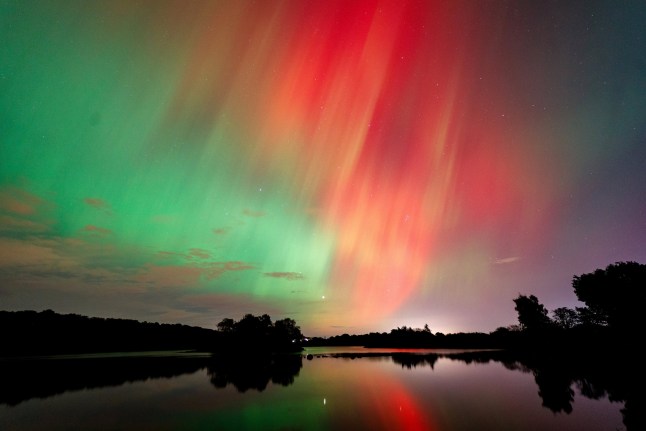
The Aurora Borealis? At this time of year? At this time of day? In this part of the country? Localised entirely in your back garden? (Picture: Cat Perkinton/SWNS)
It felt like a once-in-a-lifetime experience,seeing the Northern Lights in the UK on Tuesday night.
But the thing is,for Josh Yonish,a 22-year-old geologist,he’d already seen them before up in Birmingham in May,as countless other Britons did.
Now there they were once again above them,stripes of green,blue,pink and purple dancing across the night sky as the stars began to shine.
‘To be seeing one of the natural wonders of the world through my bedroom window in northeast London on a cold October night felt quite surreal,’ Josh tells Metro.
‘Feels like I should be paying money to go to Iceland or Finland to see them,so I’m grateful for that!’
But why is the UK seeing this spectacular sight so often this year?
Aurora Borealis (no,not that actor from Bones or Buffy the Vampire Slayer) appear as ethereal curtains that stretch wide across the night sky.
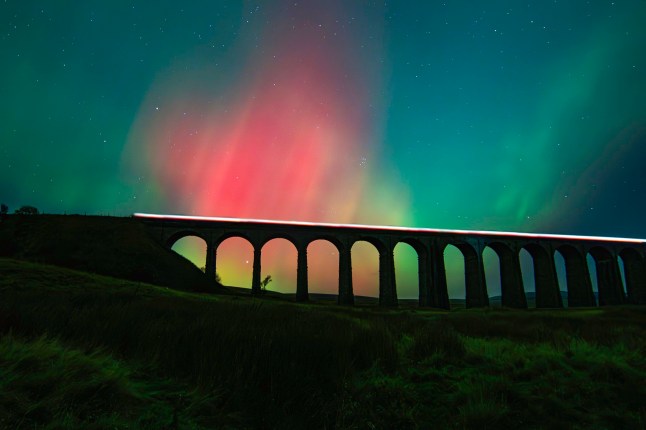
‘Aurora’ is the goddess of the dawn and ‘Boreas’ is the northern wind personified (Picture: David Robertshaw Photography/SWNS)
The clue’s in the name,but they’re only seen in the northern hemisphere. Their southern counterpart,Aurora Australis,is seen in latitudes near the South Pole.
The Earth has something known as a magnetic field that helps keep all kinds of space junk and gunk away – think of it like an apple wrapped in cling film.
One thing the magnetic field helps repel are particles,including the blobs of plasma spat out by the sun. As nuclear reactions occur on the sun,it regularly coughs up material from its surface.
To get the latest news from the capital visit Metro's London news hub.
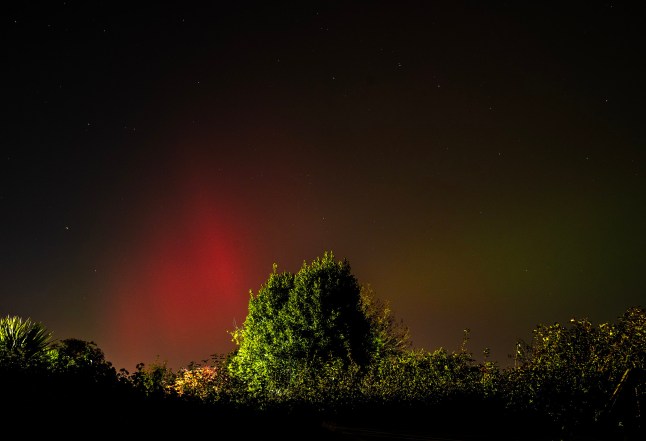
Atoms and models all have distinct hues,which is why the Northern Lights are so colourful (Picture: Brian Lawless/PA Wire)

Northern Lights over Salisbury Cathedral (Picture: Martin Cook/SWNS)
This wind travels through space at breakneck speeds up to 45 million mph. If any crash into Earth’s upper atmosphere,they bounce off the planet’s magnetic field and are thrown towards the poles.
Every particle glows different colours. Take oxygen,which has a greenish hue to it,or red-coloured nitrogen.
When all these colourful particles collide with the particles already trapped around Earth’s magnetic field,this causes them to light up.
Usually,you can only see the aurora in Iceland,Scandinavia,Canada and Alaska. But this year,a strangely wide swath of the Northern Hemisphere’s sky has been lit up with this brilliant show of colour.
‘The reason we are seeing more northern lights events,the aurora borealis,here in the UK is that we are near a solar maximum,’ explains Jo Farrow,a forecaster for the independent meteorological service,Netweather.
A solar maximum is a period during the sun’s 11-year cycle when the celestial body is especially pumped up.
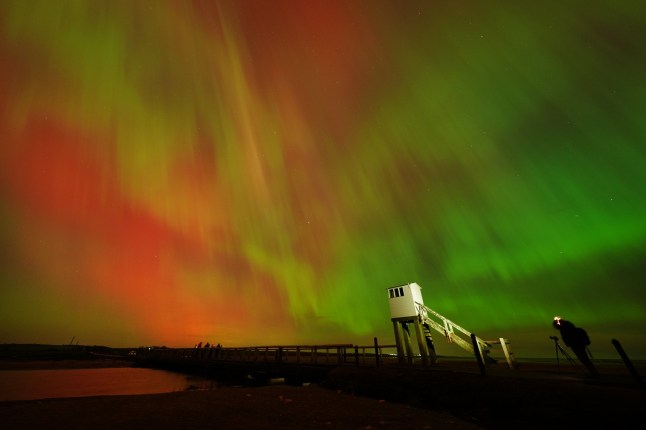
The Northern Lights,also known as the Aurora Borealis,are caused by the sun and Earth’s particles colliding (Picture: Owen Humphreys/PA Wire)
Sunspots,which show as dark areas in photographs of the sun,begin to pop up during this. And much like a pimple on a teenager’s face,when these spots burst,they burst.
They shoot out radiation called solar flares and giant eruptions of particles known as coronal mass ejections (CMEs). When CMEs collide with the Earth,they cause geomagnetic storms,also known as solar storms.
The sun expelled an Earthbound CME on Wednesday,which reached us yesterday evening,causing a ‘severe’ geomagnetic storm’,according to the Met Office.
‘In a time of solar maximum,there are more sunspots,more solar flares,more CMEs,and so more energised particles for the solar wind to bring towards Earth,’ explains Farrow.
‘When a CME is “Earth-directed”,the sun being a sphere,can throw CMEs out in any direction. There have been some very large flares recently.
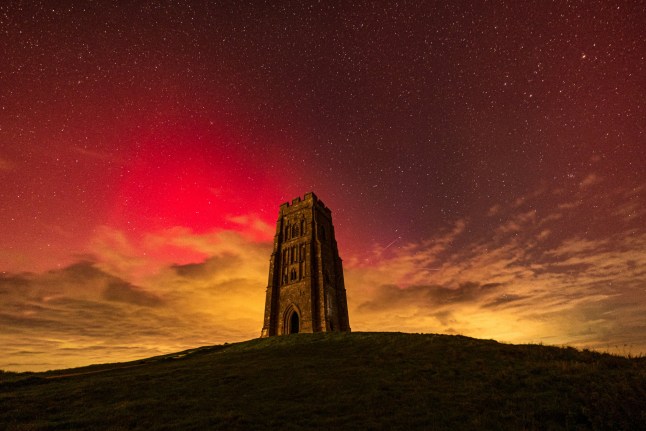
Glastonbury Tor,Somerset,was one of the many places in Britain treated to the rare light show (Picture: Michelle Cowbourne/SWNS)
‘There was the G5 geomagnetic storm in May and last night’s G4 storm,both of which coincided with clear skies for some parts of the UK,at night,so that we can actually see it.
‘Also,the action started in the evening,not too late that everyone was asleep and so people sharing photos on social media allowed others to pop out for a look too. Even though it was chilly on Thursday night.’
The closer you are to the equator,the less chance you’ll have of seeing the Northern Lights. But the chances of seeing the aurora elsewhere increase when solar storms happen.
‘These solar flare ejections from the Sun’s surface can be huge,as per what happened last night,hence the reason for southern areas seeing the displays,which is very unusual,’ adds Jim N R Dale,the founder and senior meteorological consultant at the British Weather Services,adds.
 There’s a lot of geomagnetic activity at the moment (Picture: AuroraWatch UK)‘Chances of aurora sightings on Saturday will be increasingly confined to further north in Scotland.’Josh certainly wouldn’t mind seeing them again either,especially as it’s cheaper than a flight to Iceland.‘My favourite thing to see was how they changed between every photo I took,’ they explain.‘Even though I couldn’t really see anything with the naked eye it felt like I was watching an artificial light show on a massive scale.’
There’s a lot of geomagnetic activity at the moment (Picture: AuroraWatch UK)‘Chances of aurora sightings on Saturday will be increasingly confined to further north in Scotland.’Josh certainly wouldn’t mind seeing them again either,especially as it’s cheaper than a flight to Iceland.‘My favourite thing to see was how they changed between every photo I took,’ they explain.‘Even though I couldn’t really see anything with the naked eye it felt like I was watching an artificial light show on a massive scale.’United News - unews.co.za